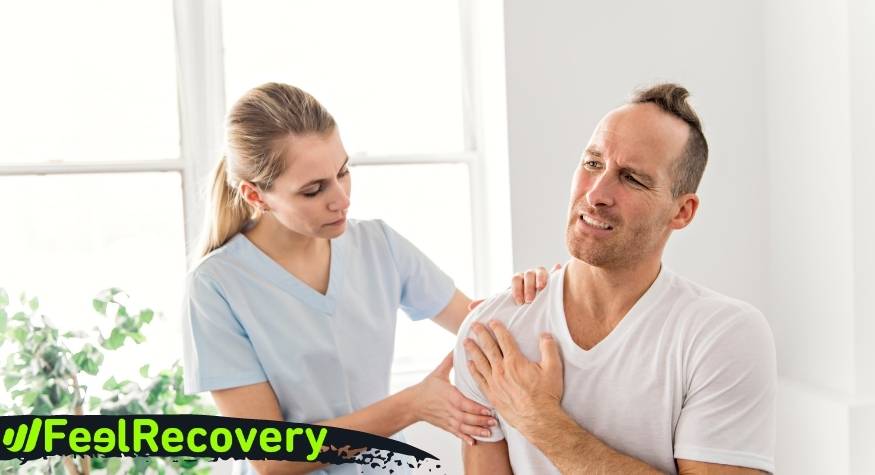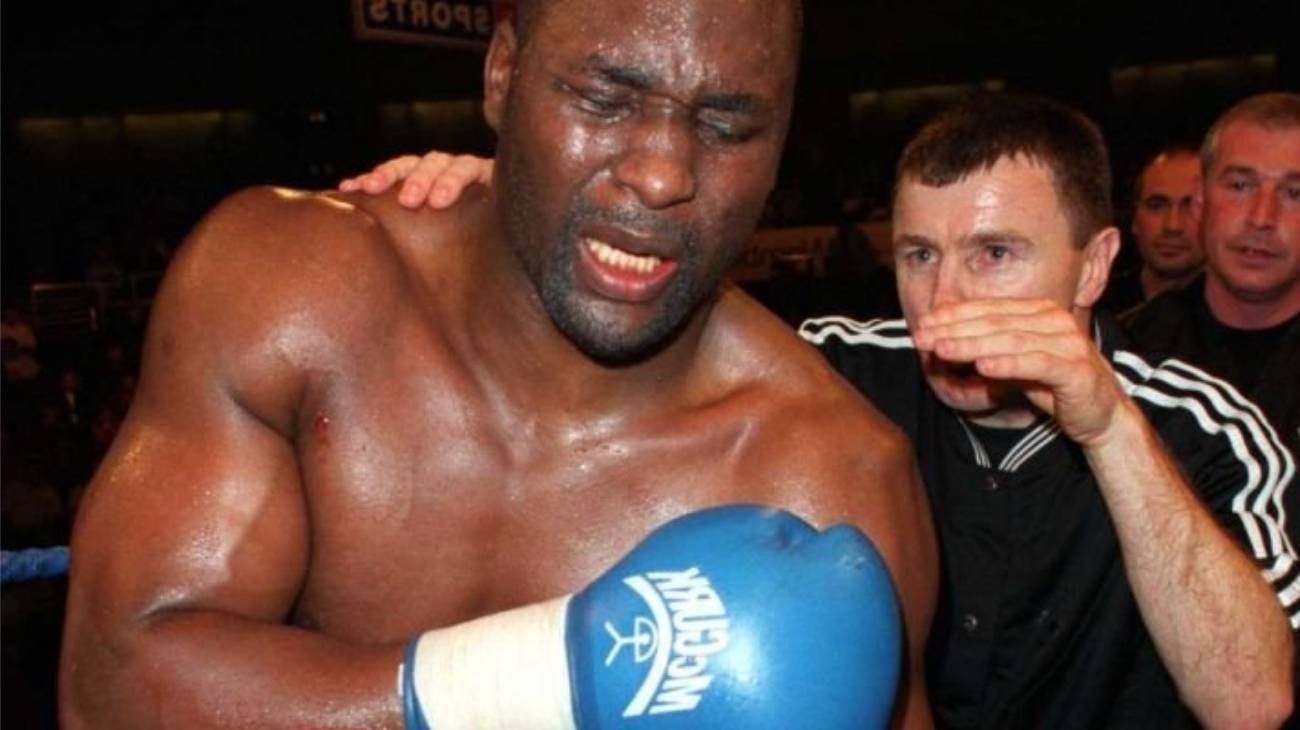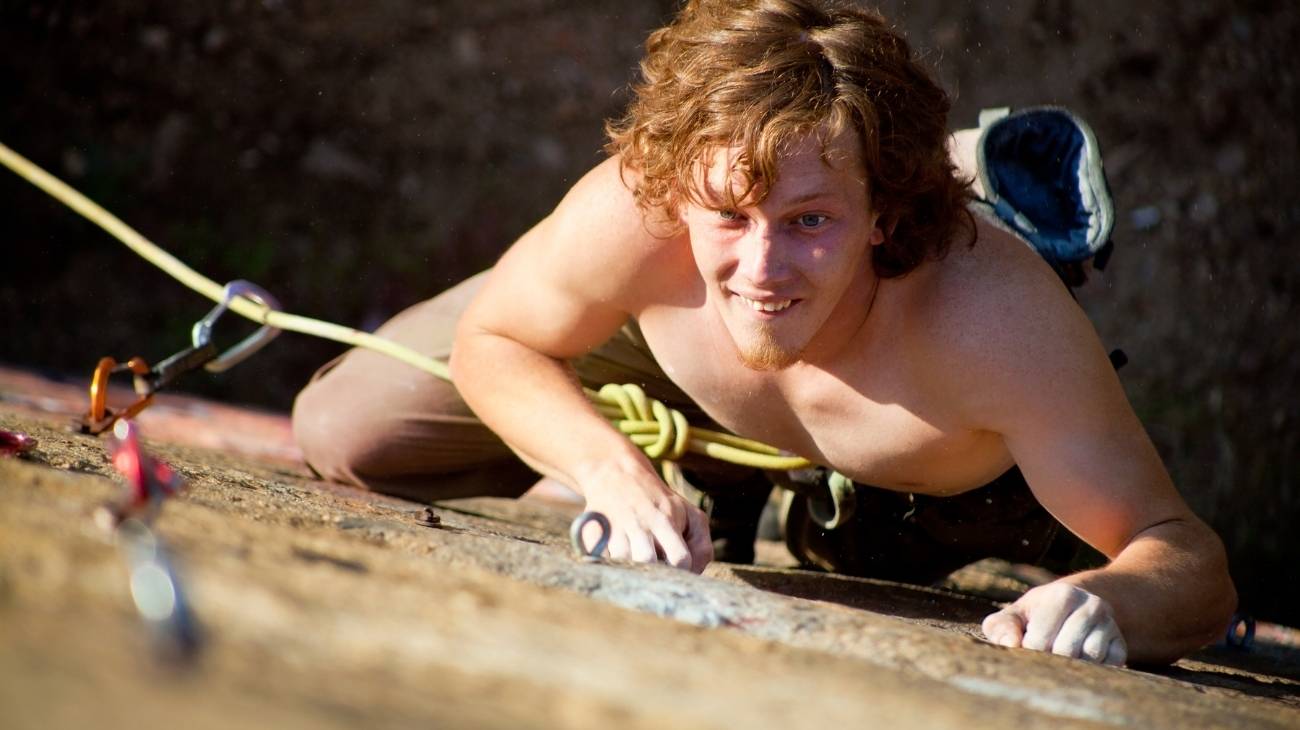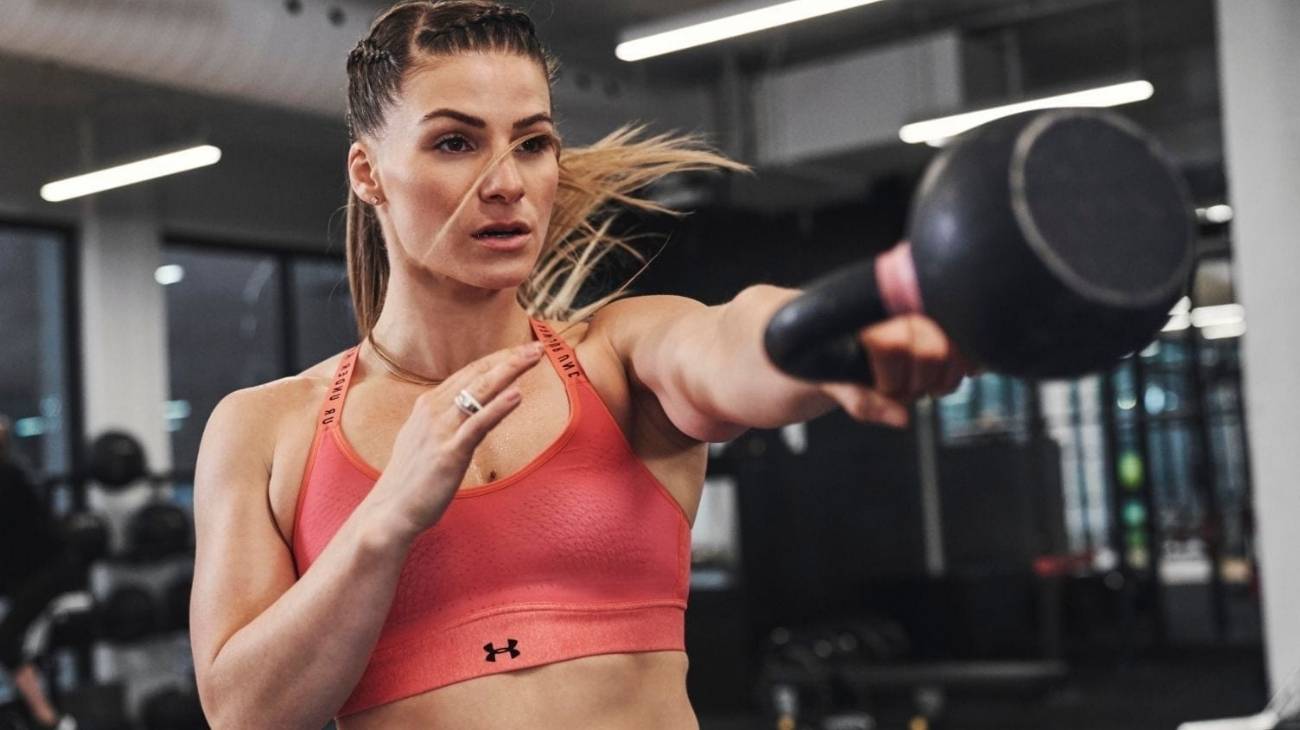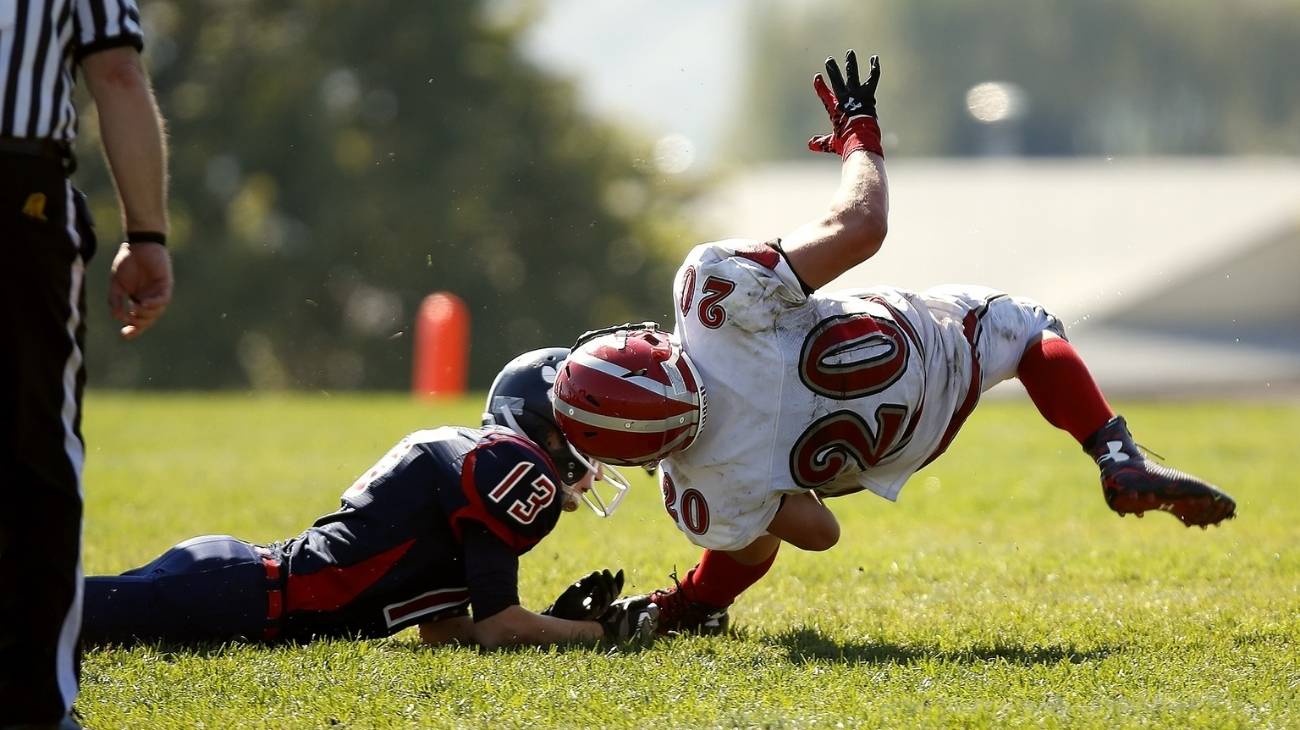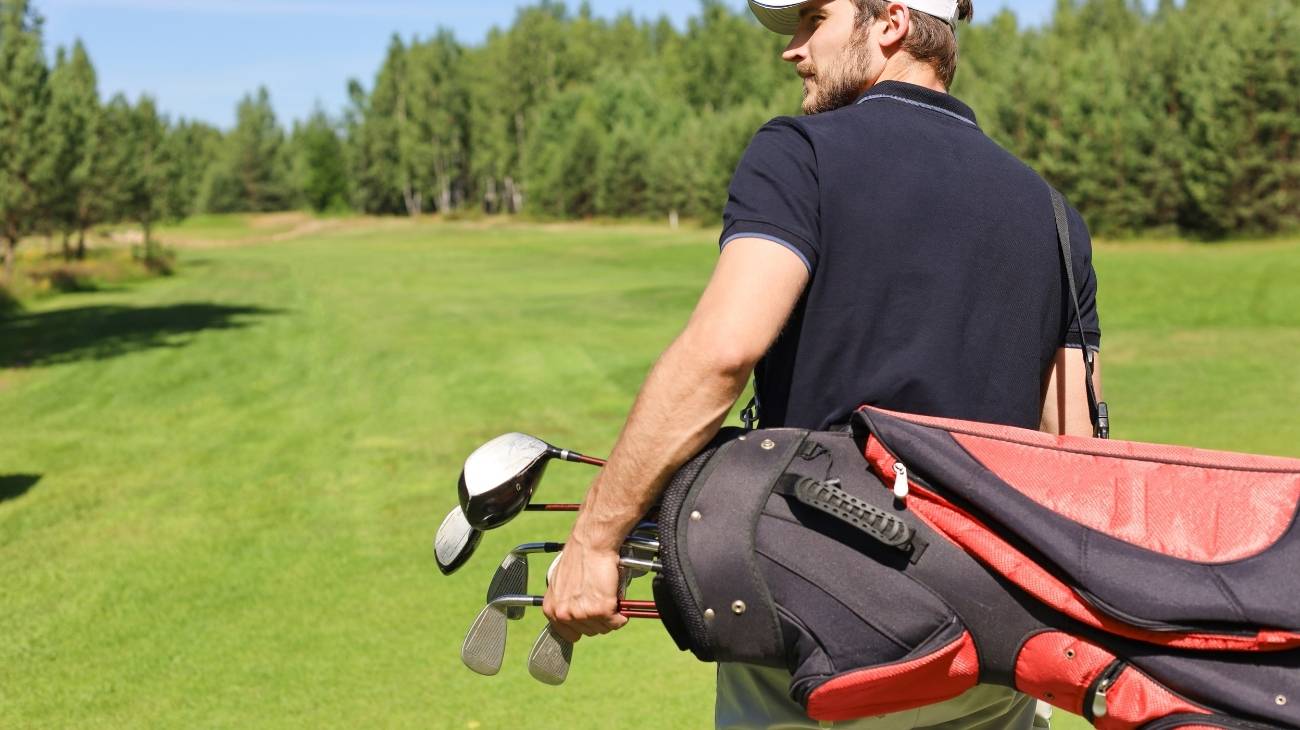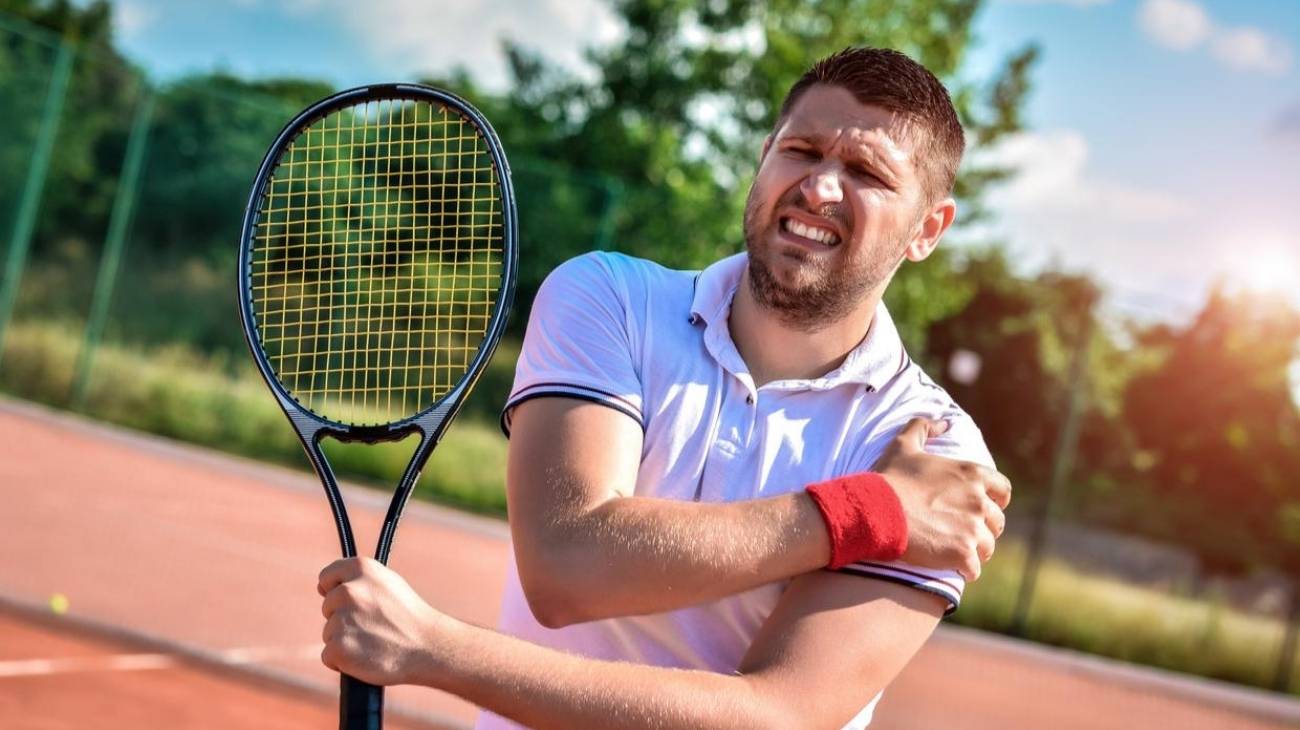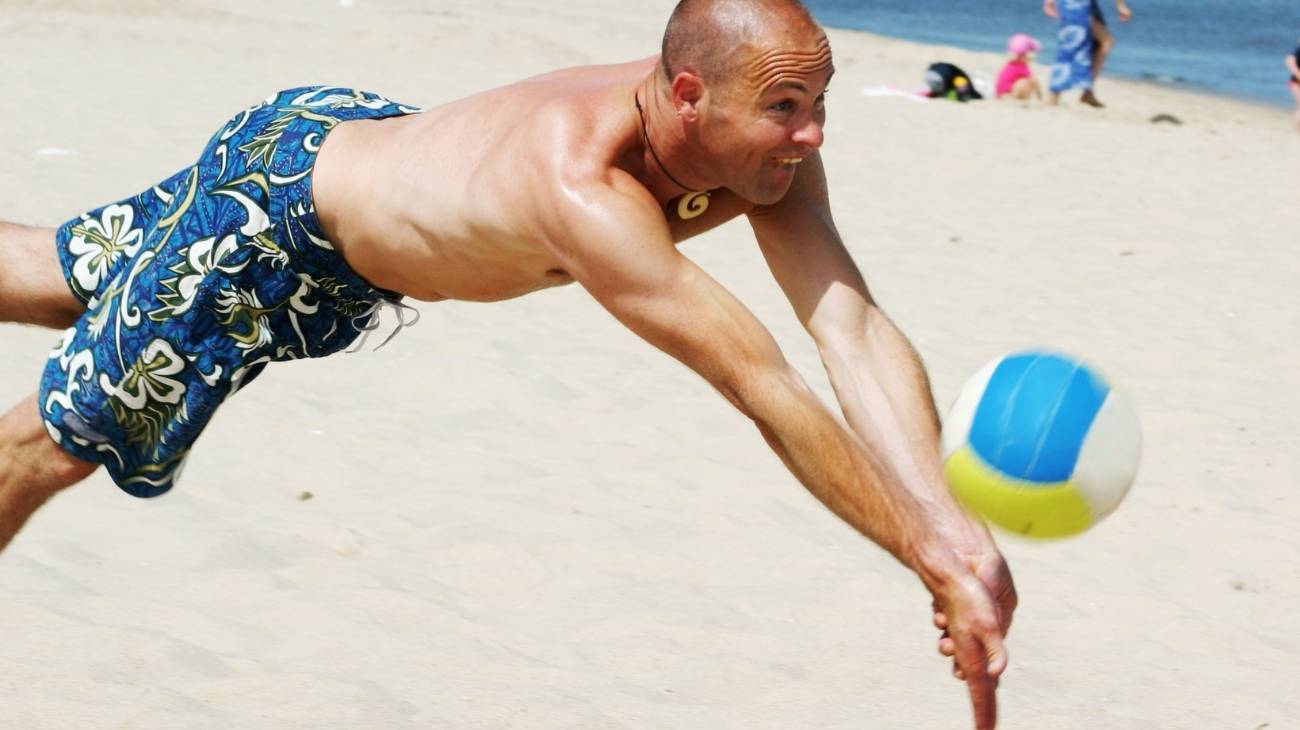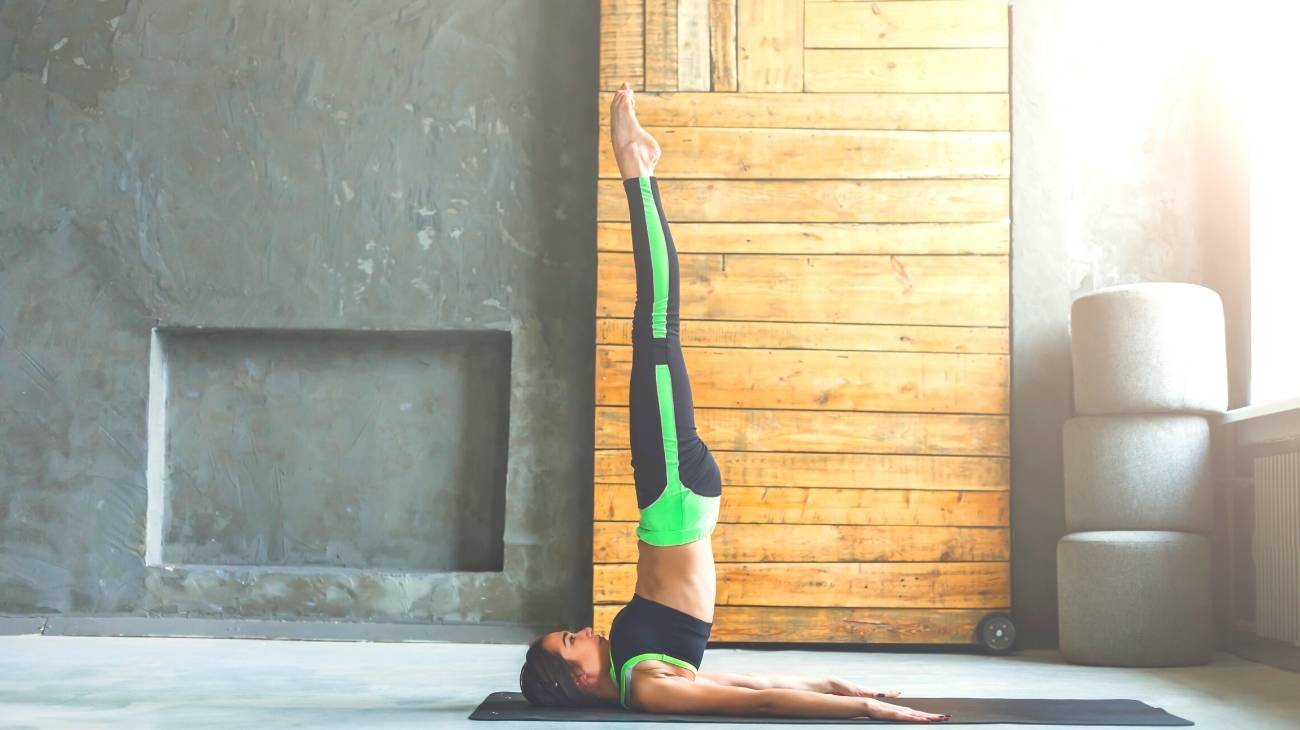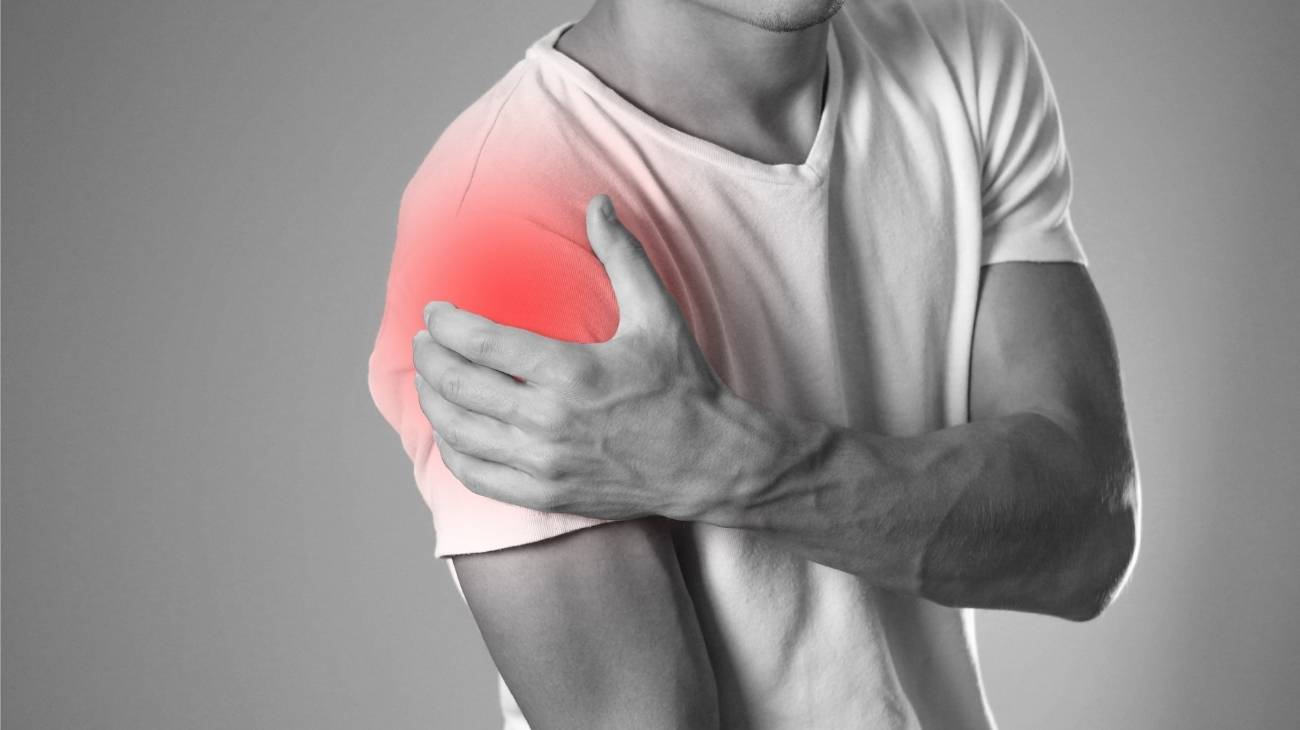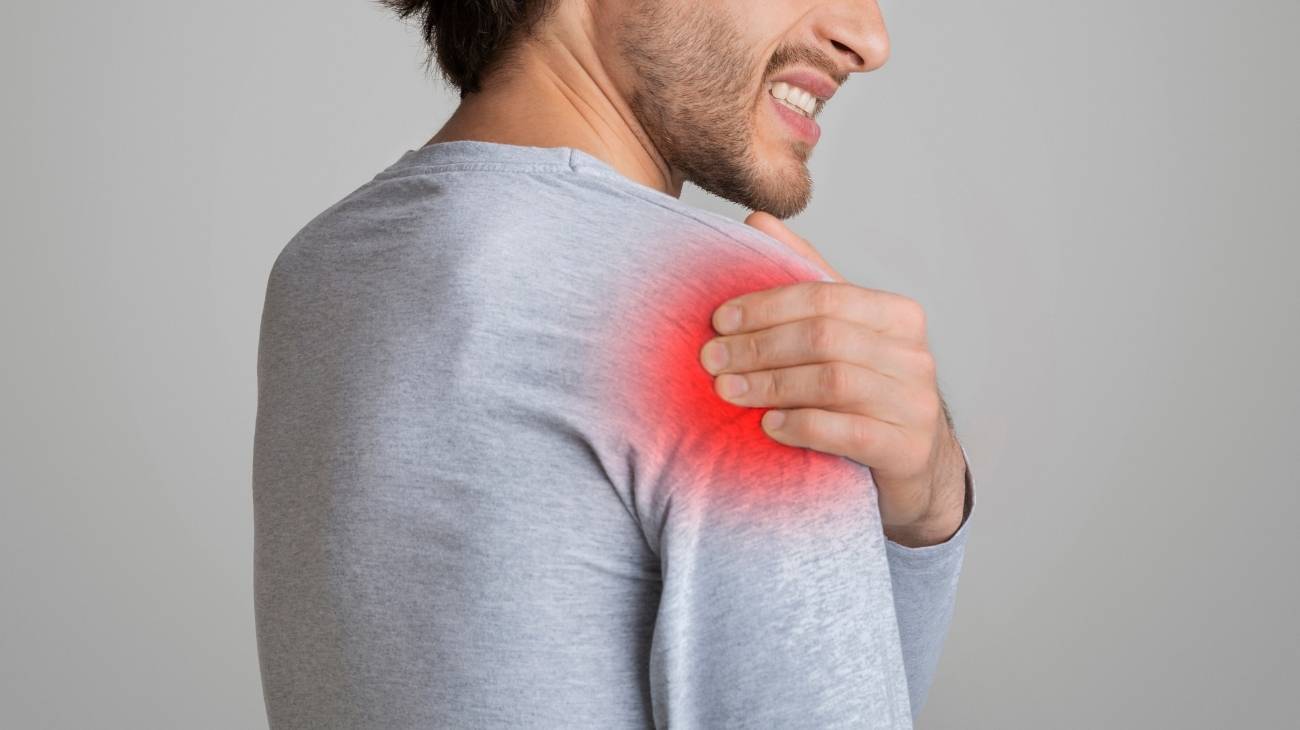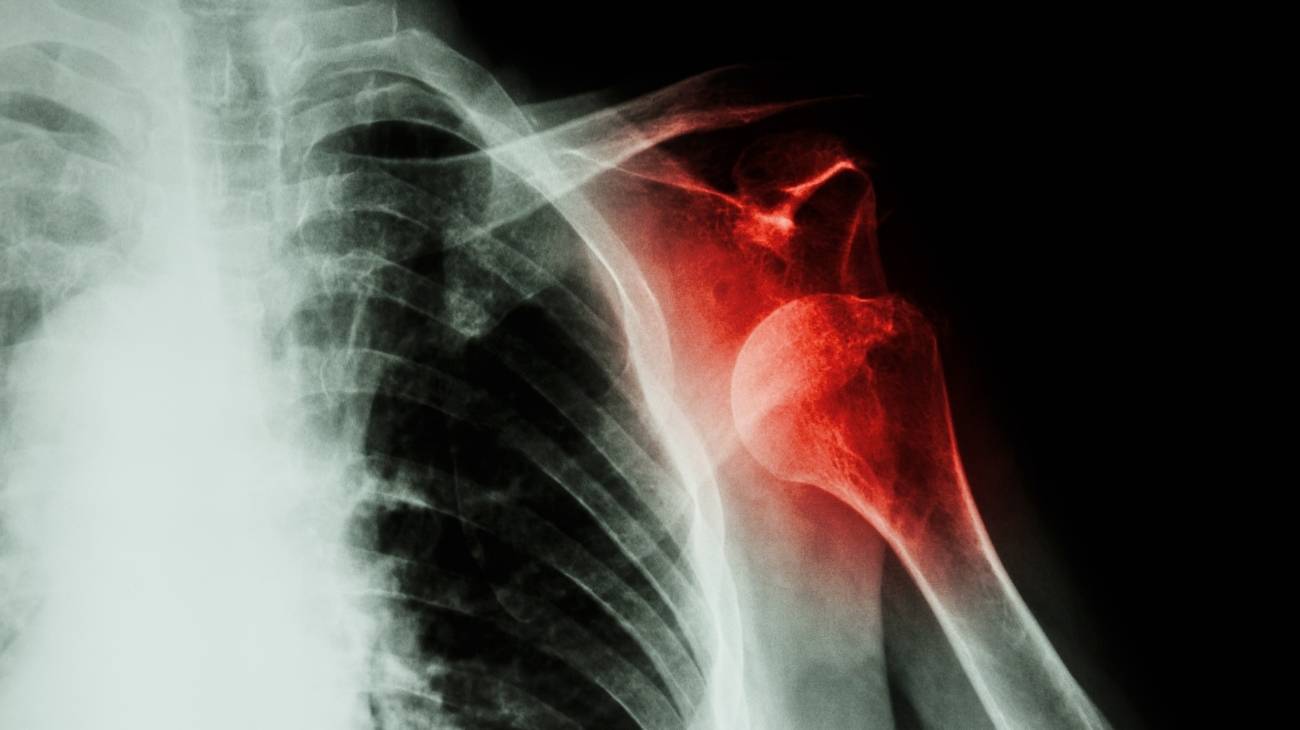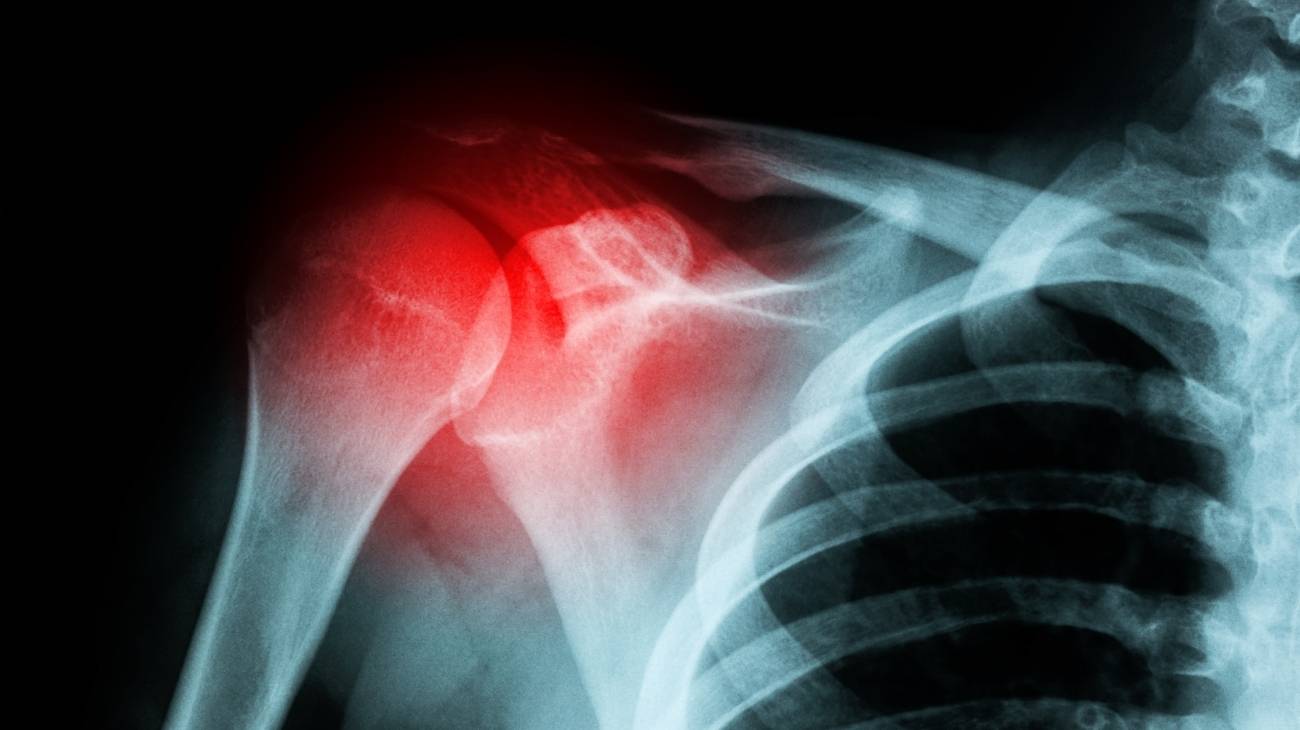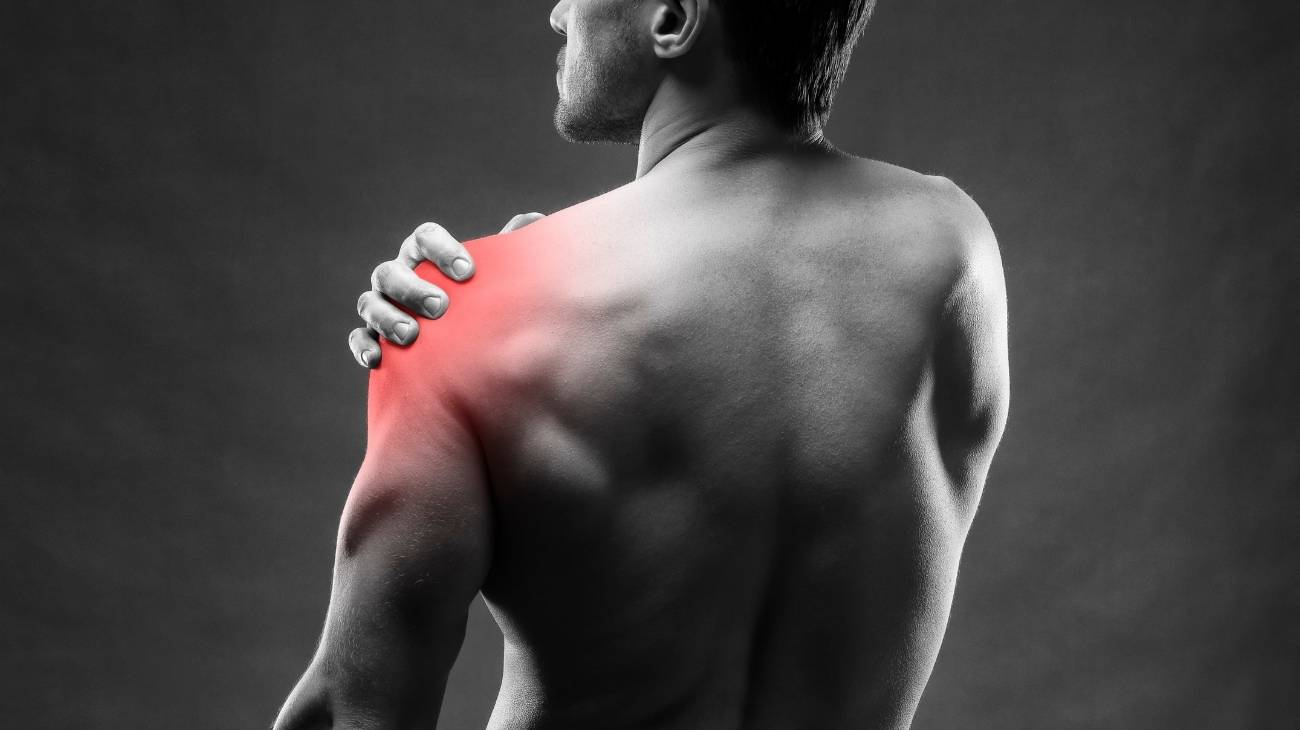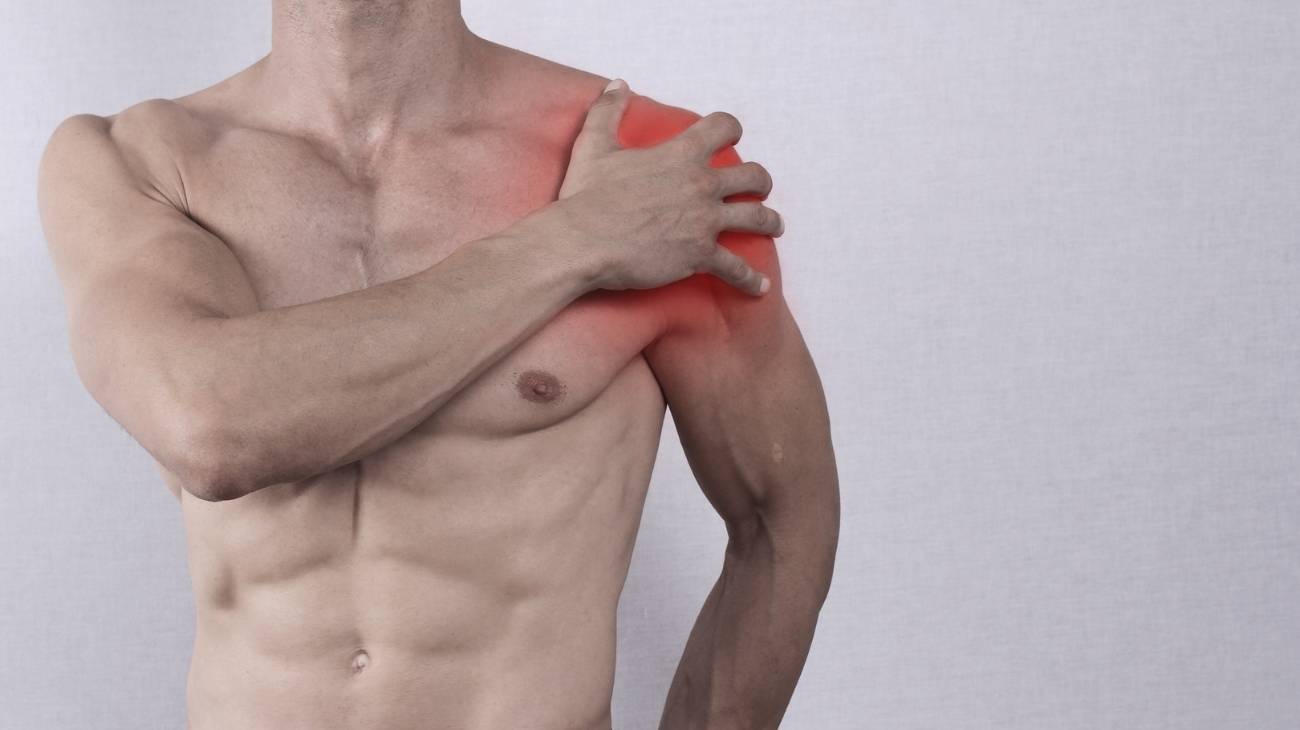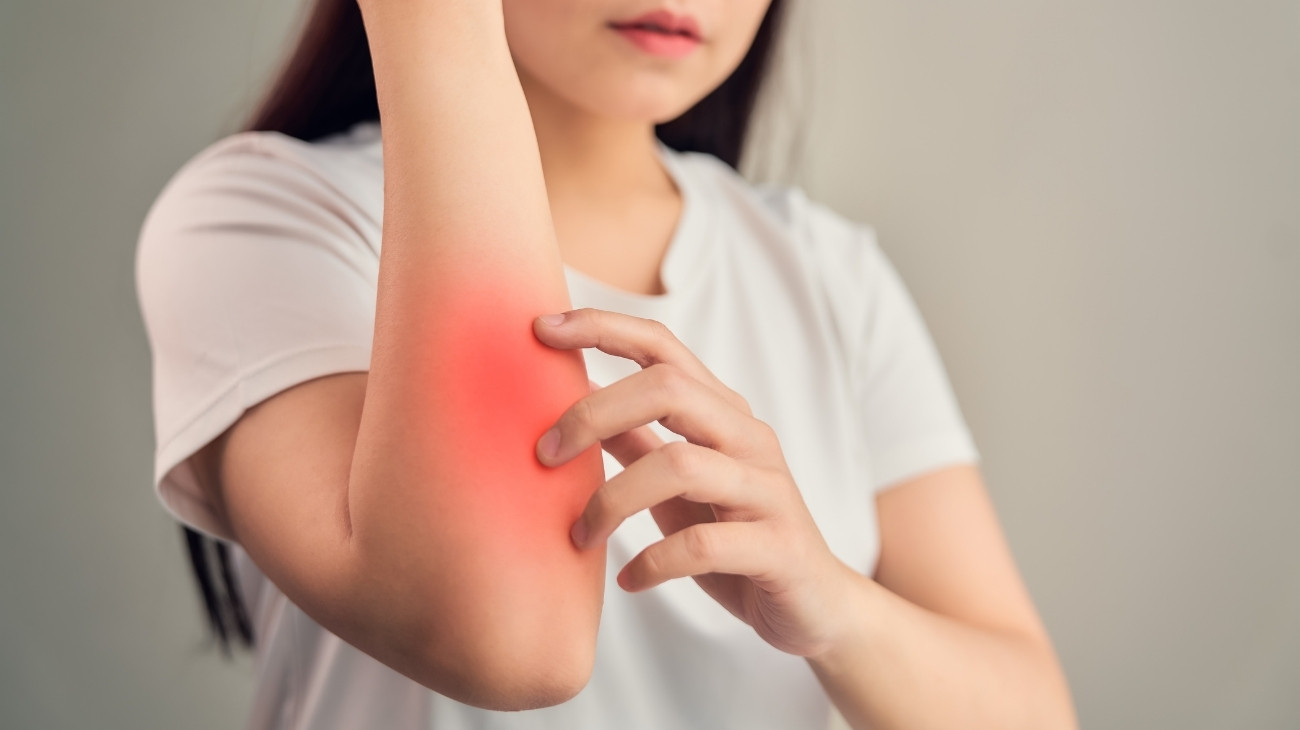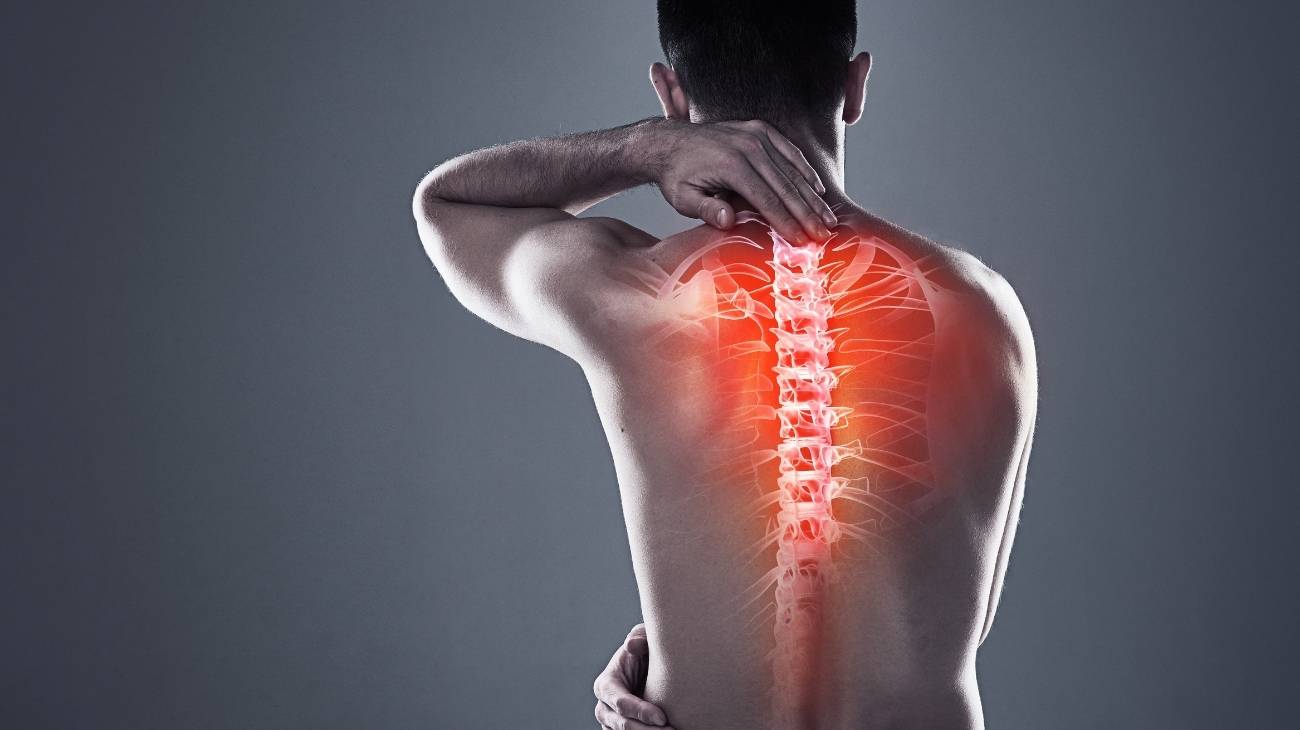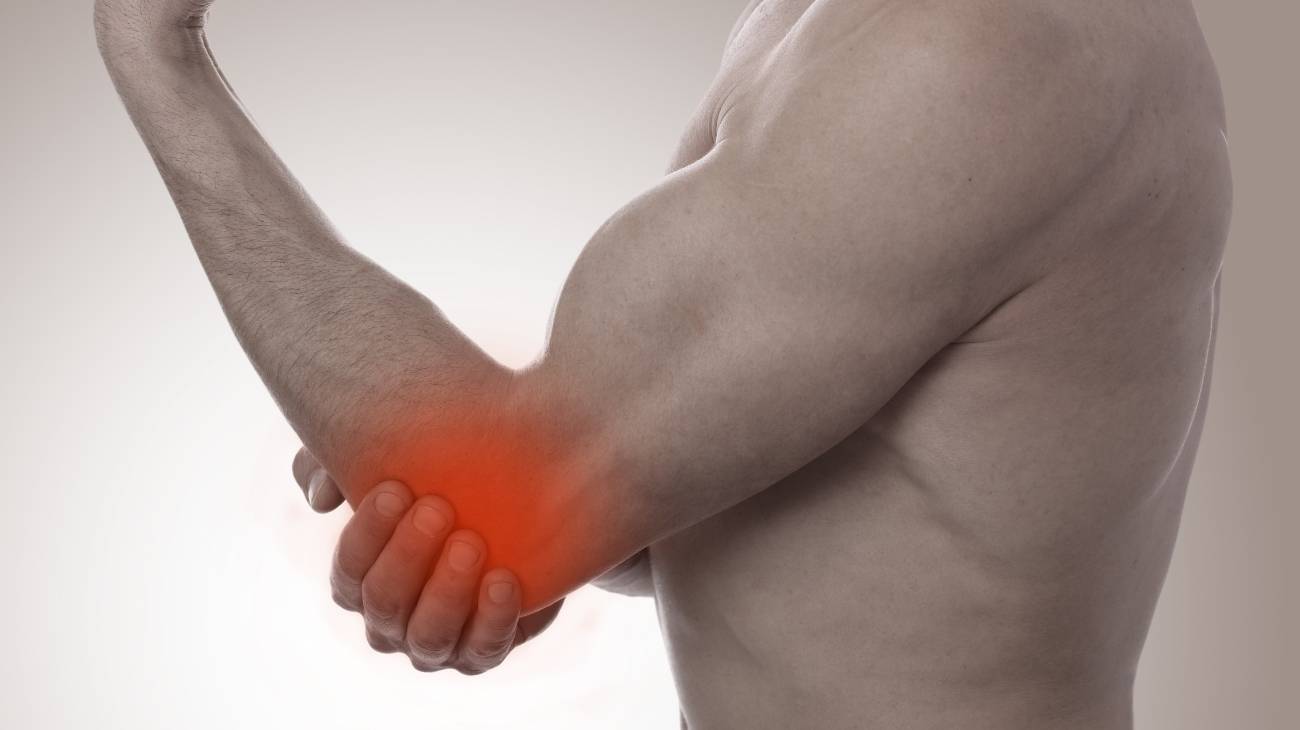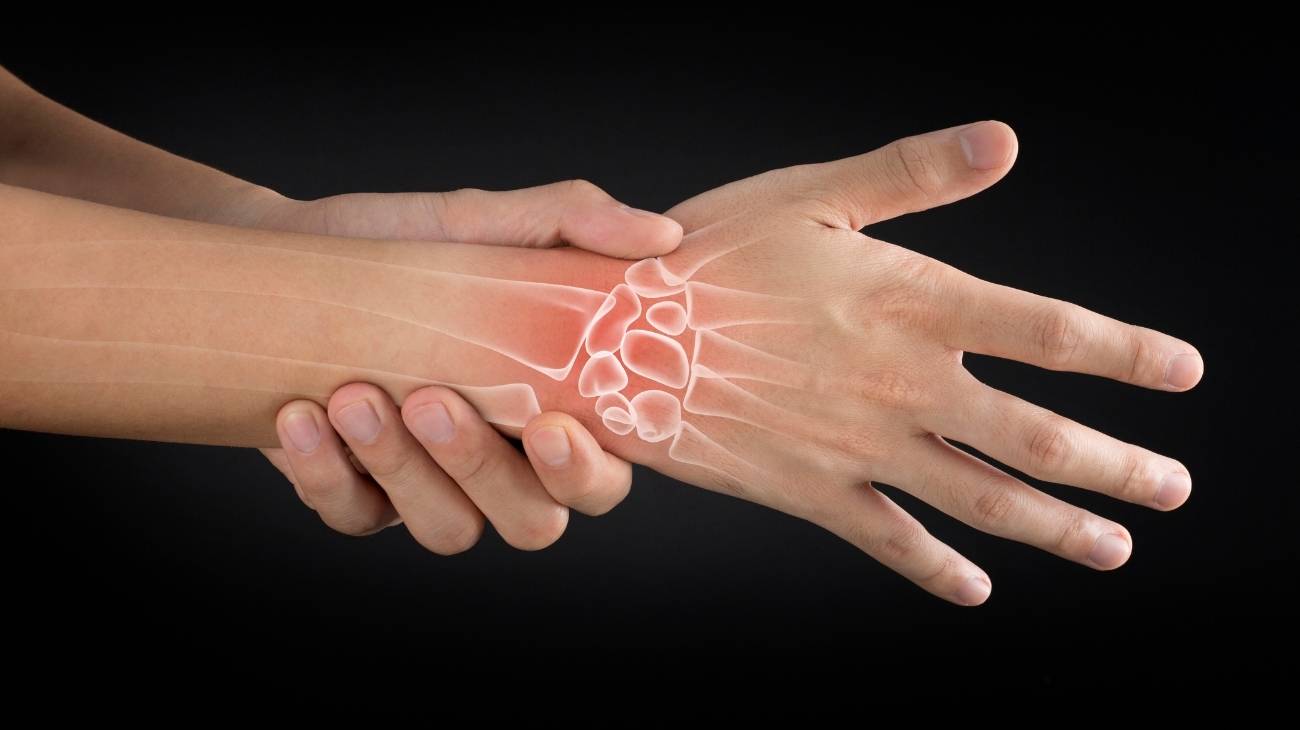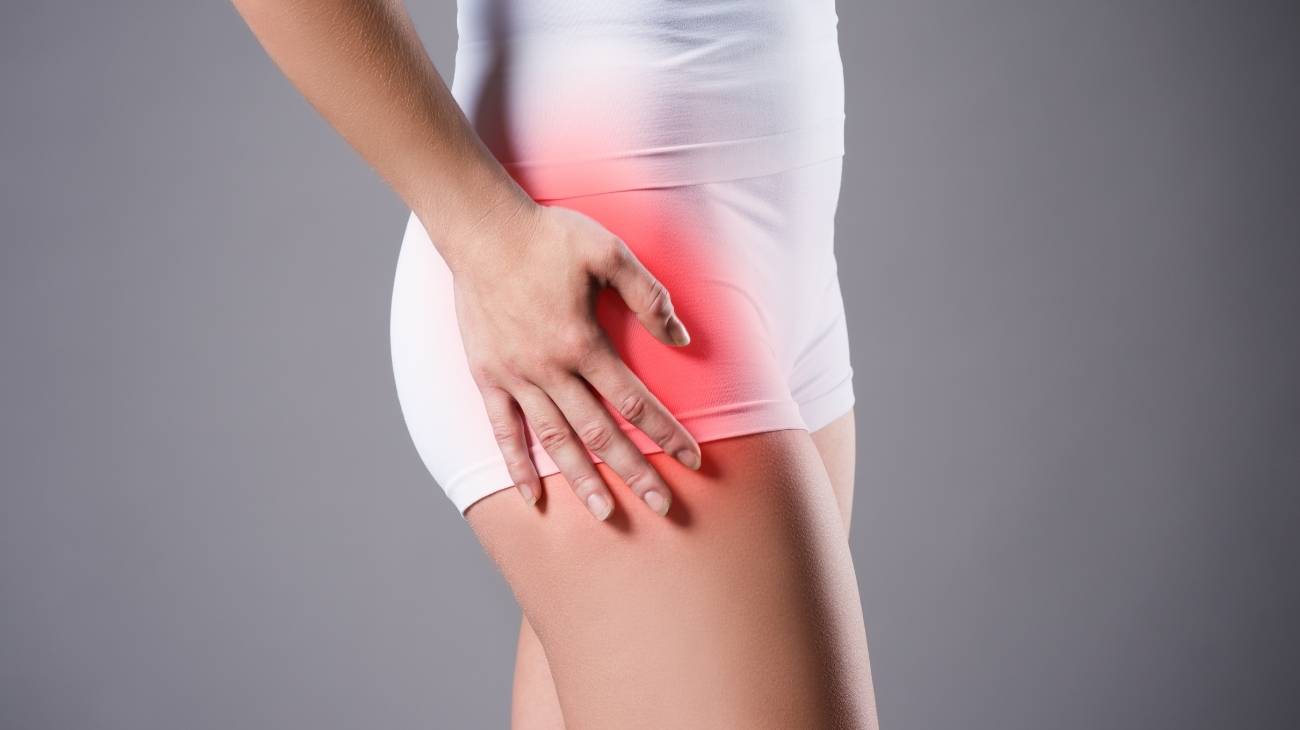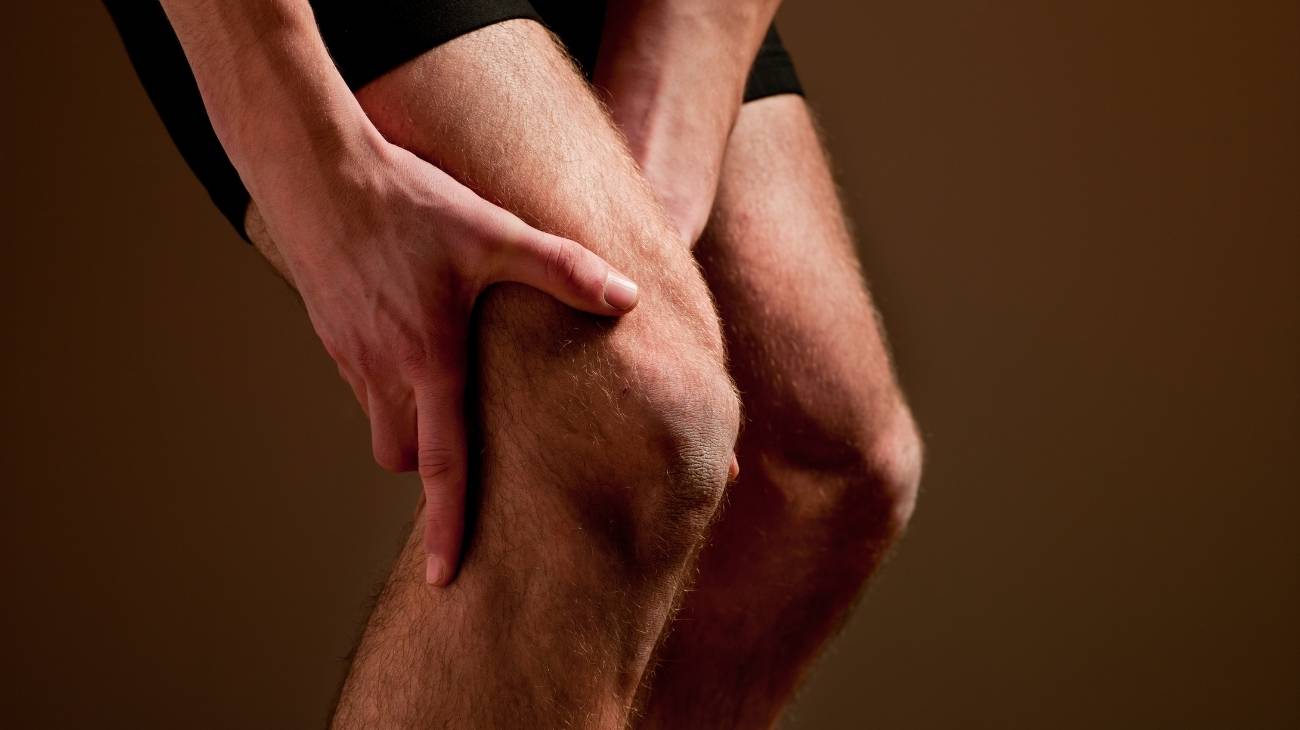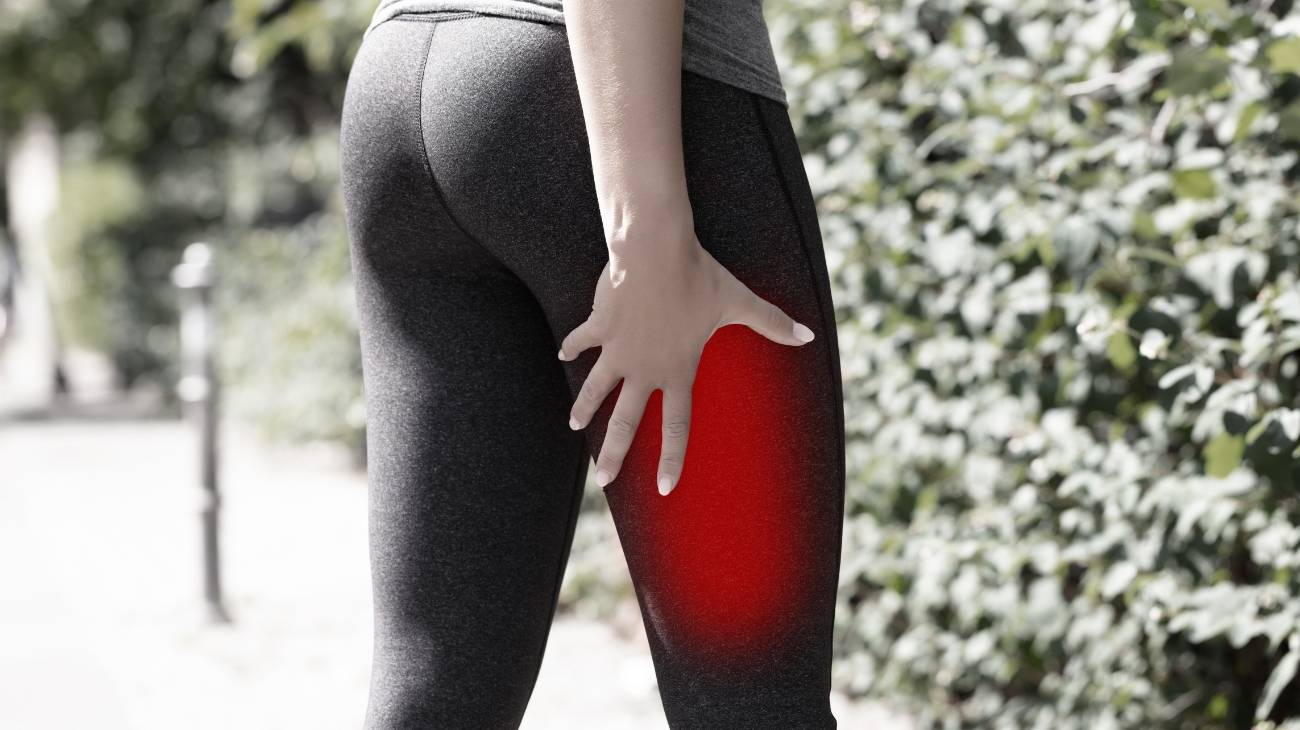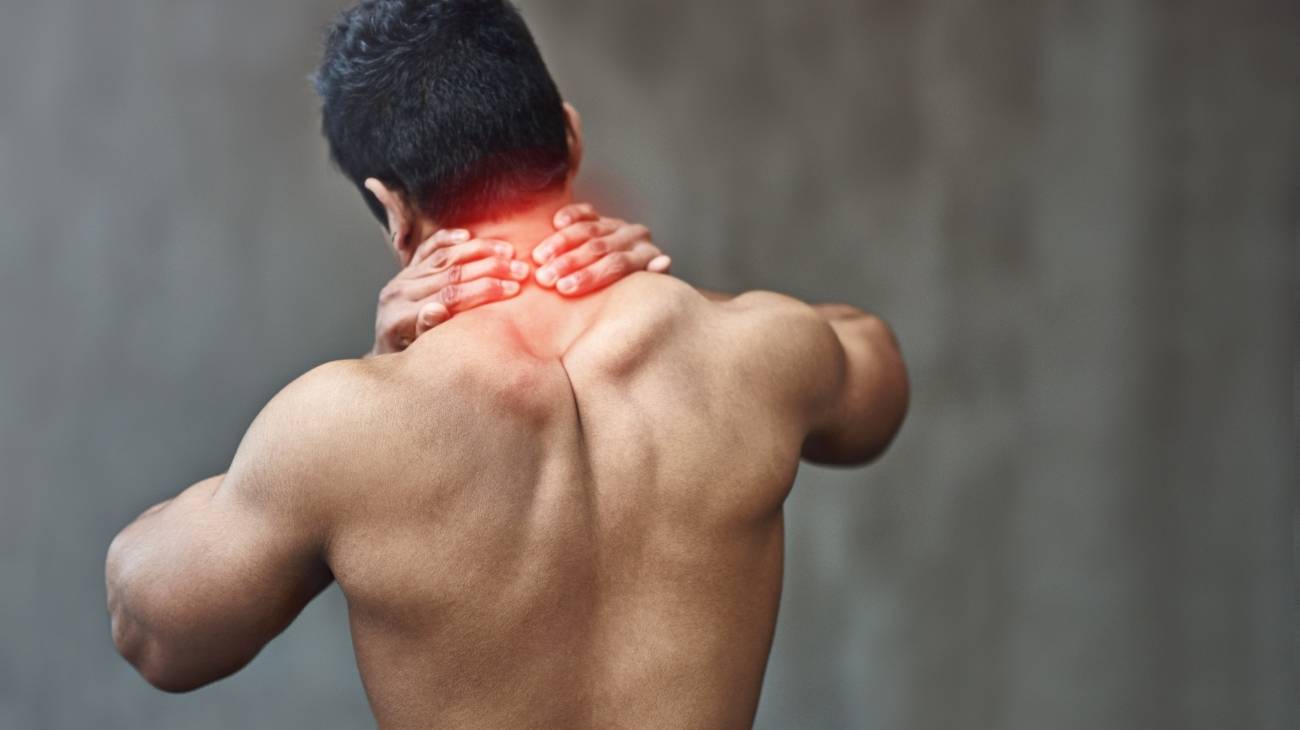- What types of shoulder injuries can we suffer from?
- Best products for the recovery of shoulder injuries
- What are the causes of shoulder pain?
- What are the symptoms of shoulder and trapezius pain?
- How to apply the RICE therapy to treat shoulder injuries?
- Most common sports shoulder injuries
- Most common shoulder conditions
The shoulder is a complex joint that provides mobility in the embrace and brings precision in the motricity of people. It is composed of several muscles and joints connected by ligaments and is the joint with the greatest range of motion in the human body.
Learn everything you need to know about shoulder injuries: what are the most common types of injuries, the main causes of shoulder pain and what symptoms to look out for to quickly address an injury. You will also learn how to apply the PRICE therapy as first aid in case of minor discomfort.
What types of shoulder injuries can we suffer from?
The clavicle, scapula and humerus are the three bones that make up the shoulder joint. They are solid structures but can also break in the event of falls, traffic accidents and muscle overload.
Muscle injuries
Lifting heavy loads and using only the strength of the arms causes irregular compression of the shoulder blade on tissues such as ligaments and tendons. Initially, mild pain and tension is felt in the affected area, but in the long term it can lead to other ailments.
Lifting a heavy object overhead activates the four muscles that make up the rotator cuff. This is a mechanism susceptible to muscle, ligament and tendon injuries. When you feel pain, you should quickly take a break.
Muscle fatigue
When your muscles feel tired, it may be because the fibres are weak due to poor nutrition or because there has been an overload of tension on the muscles.
Bear in mind that when we overtax the body in conditions of muscle fatigue, injury such as muscle contractures and muscle tears are likely to occur. If you enjoy sporting activity, allow the cells and fibres to regenerate before returning to physical activity.
Tendonitis
Although there are several tendons in the shoulder, only five of them are most likely to be damaged and ruptured: four tendons that make up the rotator cuff and one biceps tendon. Tendons are tough structures, but they become irritated and inflamed if the strain exceeds their original capacity.
Tendinitis can be acute if it is caused by an accident or a tear. But it is also likely to be caused by a degenerative disease that directly attacks the soft tissues and the function of the rest of the shoulder components.
Tears
A tear is a break in the small fibres that make up the ligaments, tendons and muscles. It is no longer referred to as an irritated or inflamed tissue, but now enters a stage of partial or complete rupture.
When the rupture is total, surgery is required. Although, if the rupture is partial, it is possible that recovery, in the case of tendons and ligaments, can be carried out by arthroscopy, provided that the specialist so decides.
Bursitis
Depending on the size of the bursae, they will have a greater impact on the function of the shoulder and a greater sequelae in the case of severe injuries. Bursae are cushions located inside the joints that serve to prevent wear and tear on the internal structure.
When injured, they become inflamed and cause severe pain that only subsides with prolonged rest or drainage to reduce the amount of excess synovial fluid. These pads serve as pressure cushions and prevent friction between the bones.
Dislocations
The main cause of shoulder bones dislocating out of place is severe blows, either from car accidents, falls or trauma from sports activities such as football.
The worst dislocations are those that occur in large joints, such as the shoulder. And the only way to relieve the pain is with mechanical repositioning of the displaced bone, then rest for several weeks while waiting for the body to regenerate the affected tissues.
Osteoarthritis
Osteoarthritis tends to be a hereditary disease and is more prevalent in women and when the age is over 50-55 years. Osteoarthritis in the shoulder is the wearing away and breakdown of the cartilage that lines the bones joined at the joints.
Being overweight and receiving constant blows to the joints are also risk factors. In addition, the ligaments and muscles around the joints become stiff, tight and weak as a result.
Fractures
This is the most serious injury to the shoulder joint, affecting the function of the entire arm and perhaps the back. A fracture can be open if the affected bone breaks into several pieces and damages the tissues around the joint.
A fracture may also present as "Zig Zag" fissures that are only visible after an X-ray is taken. Whatever the case, the option is to immobilise the shoulder for several weeks.
Best products for the recovery of shoulder injuries
Bestseller
-
Acupressure Mat and Pillow (Black/Gray)
$49.95 -
Acupressure Mat and Pillow (Green/Navy)
$49.95 -
Acupressure Mat and Pillow (Pink/Bordeaux)
$49.95 -
Acupressure Pillow (Black/Gray)
$29.46 -
Acupressure Pillow (Green/Navy)
$29.46 -
Acupressure Pillow (Pink/Bordeaux)
$29.46 -
Ice Massage Roller Ball (Black)
$39.95 -
Ice Massage Roller Ball (Green)
$39.95 -
Ice Massage Roller Ball (Pink)
$39.95 -
Microwave Heating Pad for Neck & Shoulder Pain Relief (Hearts)
$24.95 -
Microwave Heating Pad for Neck & Shoulder Pain Relief (Oxford)
$24.95 -
Microwave Heating Pad for Neck & Shoulder Pain Relief (Sport)
$24.95 -
Microwave Heating Pad for Neck Pain Relief (Hearts)
$19.95 -
Microwave Heating Pad for Neck Pain Relief (Oxford)
$19.95 -
Microwave Heating Pad for Neck Pain Relief (Sport)
$19.95 -
Microwaveable Heating Pad for Pain Relief (Hearts)
$19.95 -
Microwaveable Heating Pad for Pain Relief (Oxford)
$19.95 -
Microwaveable Heating Pad for Pain Relief (Sport)
$19.95 -
Shoulder Support Brace (Black)
$24.95 -
Shoulder Support Brace (Green)
$24.95 -
Shoulder Support Brace (Pink)
$24.95 -
Trigger Point Massage Stick (Black)
$14.95 -
Trigger Point Massage Stick (Green)
$14.95 -
Trigger Point Massage Stick (Pink)
$14.95
What are the causes of shoulder pain?
In addition to sports injuries and accidents at home, shoulder pain is associated with other risk factors that you should be aware of. Many of these can be avoided with lifestyle adjustments.
Trauma
This is the main cause of shoulder pain, unfortunate falls, blows against objects or high impact sports are the cause of injury to any joint, but especially the shoulder because it is more exposed to these blows.
Having a healthy and toned muscle mass will protect us from various blows and, although we may suffer damage, these will not reach more delicate areas such as bones, ligaments or tendons, which is why having a good state of fitness will be a good preventive measure for trauma injuries.
Repetitive movements
Work where the shoulder joint performs constant, repetitive movements will cause the tendons, especially the rotator cuff joint, to become inflamed and painful, leading to shoulder tendonitis. Taking breaks from time to time to rest the joint is vital to prevent this ailment. In addition, as in the previous case, having strong shoulder muscles will prevent stress from falling on the tendons and therefore reduce the risk of tendinitis.
Another factor that causes pain are jobs where we are in the same posture for a long time, so it is advisable to do stretching and mobility exercises during our working days.
Stress
The mind and the body are one. Living under constant stress creates muscular "knots" that in the long term distort the functioning of the joints. When muscle mass is not in optimal condition, the strength and tension that the body requires falls back on ligaments, tendons and joints.
Mental stress causes muscle tension, a condition clinically recognised as causing fatigue, a feeling of weakness and creating difficulty in natural shoulder movements. Learning to manage stress is key to avoiding associated injuries.
Metabolic factors
Metabolic disturbances are causes that ultimately affect muscle function. These are deficiencies in enzyme production that affect glycogen, lipid and mitochondrial chain chemistry.
You may even be eating an excellent diet, but the difficulty in processing and delivering these nutrients to the body will cause the muscles to weaken and have negative consequences on endurance, flexibility and ligament elasticity.
Poor nutrition
You don't need to be excessively thin or have abdominal bloating to know that there has been poor nutrition. You only need to detect muscle weakness and poor musculoskeletal function to recognise that your soft tissues are not getting the micronutrients they need.
There are countless reasons why we may have a poor diet, whether due to bad habits, poor choice of food, an unbalanced diet, problems of absorption of various micronutrients, not having an adequate diet for the physical activity we do, etc. That is why it is best to see a nutritionist for advice on what we specifically need.
Poor hydration
The same applies to the amount of water a body should absorb each day. Specialists recommend that an adult should drink at least 2 to 3 litres of water, although this may depend on the climate, physical activities and body weight of the person. Do not wait until you are thirsty to drink water as this is the first sign of dehydration. It is better to drink several times a day in small amounts and prevent the body from becoming dehydrated.
Fitness
Without having to be an athlete, you can do small, quick exercises at home to prevent muscle mass from atrophying and losing its capacity, especially in the case of the shoulder muscles whose mobility is wide.
Get up every morning with a willingness to dedicate half an hour to mobility exercises. You' ll see how your ability to move more smoothly increases and as you go about your daily activities, you won't end up with fatigued shoulders.
Excess tension
This is another way of referring to muscle overload from occasional activities, such as moving house, where the shoulders are overworked from constantly lifting heavy objects.
The same applies to sporting activity in which the body is exhausted. Not having a good recovery time results in wear and tear on our joints, muscles and tendons, especially if you practice a sport of extreme strength such as weightlifting.
What are the symptoms of shoulder and trapezius pain?
Shoulder complaints are often accompanied by other symptoms, which can give a clear clue as to their origin, so that the medical specialist can make a more precise diagnosis and define the best treatment to follow.
The most obvious symptoms of shoulder injuries are:
- Pain: Pain often occurs with any movement of the arm, upwards or forwards. Depending on the type of pain, a specialist can tell what kind of injury it is. Localised pain is more likely to be associated with bursitis, whereas generalised pain may be associated with muscle wasting or contracture.
- Inflammation: Whenever there is swelling in the joint, there will be severe pain. If it is a soft tissue injury, applying the PRICE therapy is an excellent way to address the ailment, see below for the first steps in dealing with minor injuries.
- Clicking: This is a popular name for crepitus, the clinical term for the sound that bones make when they rub against each other in the joint. A popping sound is heard when the cartilage is already badly worn down.
- Redness: Due to the swelling of the area, the area may also change colour and turn reddish or purplish, and this may be accompanied by a feeling of warmth in the injured area.
- Difficulty moving: As well as being associated with pain, this is also caused by muscle fatigue and involuntary contractions, which prevent you from being able to lift your arm fully or perform stretches.
How to apply the RICE therapy to treat shoulder injuries?
This therapy consists of a series of steps to be followed to soothe pain and reduce inflammation in case of a mild, soft-tissue injury. PRICE is an update of the RICE therapy, as it has been better known around the world since the 1970s.
- Protection: Employ a classic bandage to cover the shoulder joint. This bandage will cover part of the back and chest. It is difficult to make a good shoulder wrap, so it is always good to practice beforehand.
- Rest: When there is rest, the damaged cells start to regenerate. Rest should be accompanied by a respective medical treatment in case of a lot of pain and inflammation. A minor injury will not take more than three days to heal.
- Ice: It has an analgesic and anti-inflammatory effect which is favourable for speeding up recovery from minor soft tissue damage. A correct application of ice should last between 15 and 20 minutes and then give the tissues a rest for another 10 minutes.
- Compression: The pressure exerted on the shoulder should be light, to lower the blood supply to the joint area, but should not completely cut off circulation. The use of a compression shoulder brace is recommended, which in addition to its compressive effect, also immobilises the area.
- Elevation: By nature this joint already fulfils this step, which is to keep the affected area above the level of the heart, thus favouring its recovery.
Most common sports shoulder injuries
Check out this list of the most common aches and pains when doing sports activities. Repetitive motions will cause the joint to wear and tear and lead to major ailments. Some high-impact sports are more prone to injury, although other physical activities that may be less risky are not exempt, so it's good to keep a close eye on the possible causes and be able to prevent sports injuries.
Most common shoulder conditions
Early detection of an injury will reduce the likelihood of being laid up for too long and not being active at home, at work or in the sporting activity you want to do on the weekends. Therefore, knowing what kind of diseases and ailments the shoulder can suffer from is of vital importance to prevent them correctly.
References
- Quillen, D. A., Wuchner, M., & Hatch, R. L. (2004). Acute shoulder injuries. American Family Physician, 70(10), 1947-1954. https://www.aafp.org/pubs/afp/issues/2004/1115/p1947.html
- Wilk, K. E., Obma, P., Simpson, C. D., Cain, E. L., Dugas, J., & Andrews, J. R. (2009). Shoulder injuries in the overhead athlete. Journal of orthopaedic & sports physical therapy, 39(2), 38-54. https://www.jospt.org/doi/full/10.2519/jospt.2009.2929
- Braun, S., Kokmeyer, D., & Millett, P. J. (2009). Shoulder injuries in the throwing athlete. JBJS, 91(4), 966-978. https://journals.lww.com/jbjsjournal/Abstract/2009/04000/Shoulder_Injuries_in_the_Throwing_Athlete.29.aspx
- Kocher, M. S., & Feagin Jr, J. A. (1996). Shoulder injuries during alpine skiing. The American journal of sports medicine, 24(5), 665-669. https://journals.sagepub.com/doi/abs/10.1177/036354659602400517
- Burkhart, S. S., Morgan, C. D., & Kibler, W. B. (2000). Shoulder injuries in overhead athletes: the “dead arm” revisited. Clinics in sports medicine, 19(1), 125-158. https://www.sciencedirect.com/science/article/abs/pii/S0278591905703008
- Kaplan, L. D., Flanigan, D. C., Norwig, J., Jost, P., & Bradley, J. (2005). Prevalence and variance of shoulder injuries in elite collegiate football players. The American journal of sports medicine, 33(8), 1142-1146. https://journals.sagepub.com/doi/abs/10.1177/0363546505274718
- Jobe, F. W., & Bradley, J. P. (1989). The diagnosis and nonoperative treatment of shoulder injuries in athletes. Clinics in sports medicine, 8(3), 419-438. https://www.sciencedirect.com/science/article/abs/pii/S0278591920308073
- Cools, A. M., Johansson, F. R., Borms, D., & Maenhout, A. (2015). Prevention of shoulder injuries in overhead athletes: a science-based approach. Brazilian journal of physical therapy, 19, 331-339. https://www.scielo.br/j/rbfis/a/7XDTVZYkJK6sQJLhSvGJQFz/
- Simovitch, R., Sanders, B., Ozbaydar, M., Lavery, K., & Warner, J. J. (2009). Acromioclavicular joint injuries: diagnosis and management. JAAOS-Journal of the American Academy of Orthopaedic Surgeons, 17(4), 207-219.https://journals.lww.com/jaaos/Abstract/2009/04000/Acromioclavicular_Joint_Injuries__Diagnosis_and.2.aspx
- Altchek, D. W., & Dines, D. M. (1995). Shoulder injuries in the throwing athlete. JAAOS-Journal of the American Academy of Orthopaedic Surgeons, 3(3), 159-165. https://journals.lww.com/jaaos/Abstract/1995/05000/Shoulder_Injuries_in_the_Throwing_Athlete.5.aspx







































